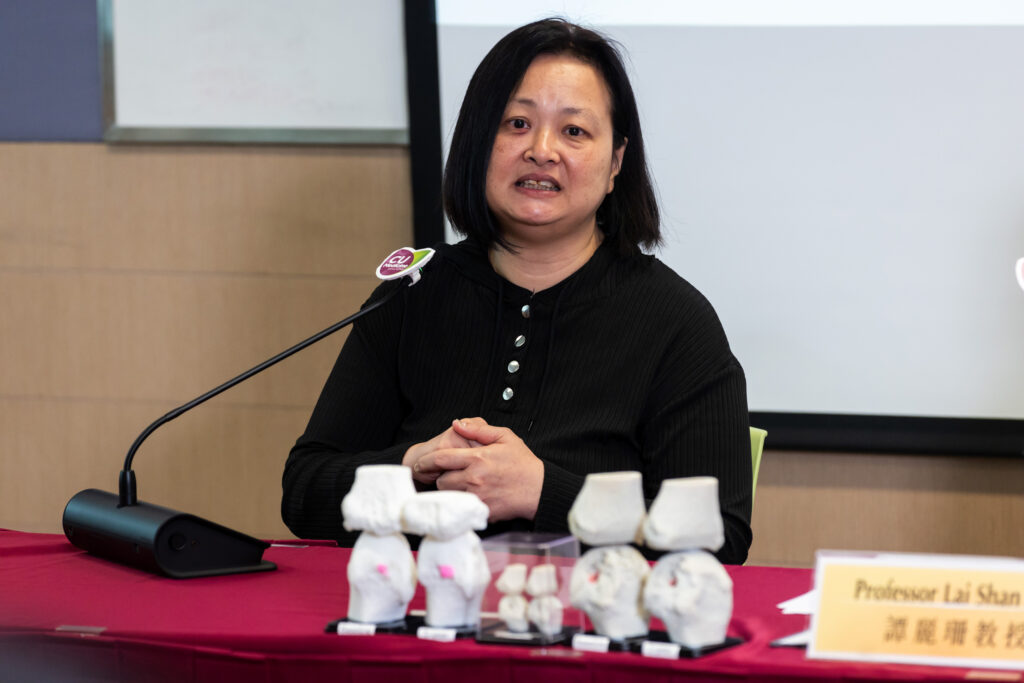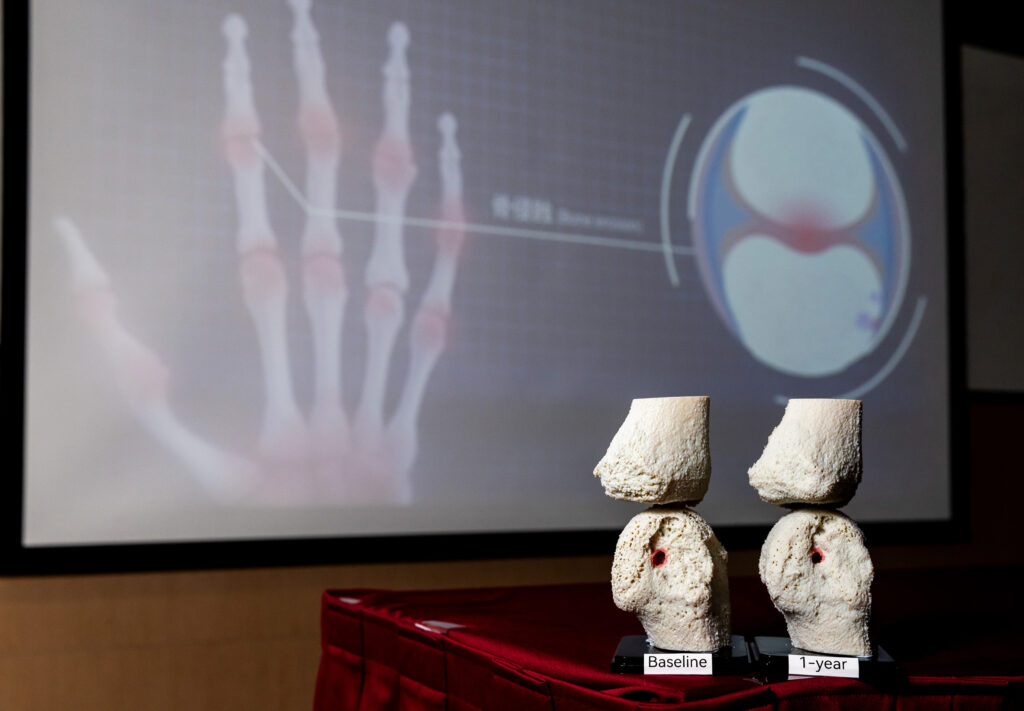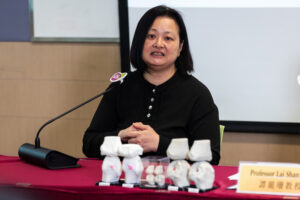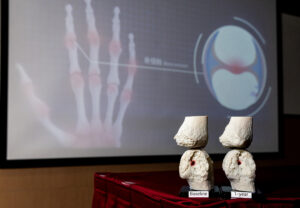CUHK
News Centre
CUHK study reveals breakthrough treatment that can repair and prevent joint damage from psoriatic arthritis
The latest research from The Chinese University of Hong Kong (CUHK)’s Faculty of Medicine (CU Medicine) has revealed that inhibiting interleukin-17 (IL-17), a kind of small protein produced by cells in the immune system, can prevent bone damage in psoriatic arthritis (PsA) patients. Using advanced imaging technology to closely measure changes in joint damage in a pool of PsA patients over time, researchers proved that secukinumab, a biologic agent that inhibits IL-17, demonstrates a potential benefit in facilitating partial erosion repair and preventing enthesiophyte progression in these patients. The findings have been published in the international medical journal Arthritis & Rheumatology.
Long-term inflammation in PsA can result in joint damage
Psoriasis is a chronic skin condition that causes scaly rashes. It is estimated to affect 0.3% of the Hong Kong population, or about 22,500 people, among whom 30% also have PsA. PsA can cause joint pain and swelling, particularly in the fingers and toes, and some people may also experience back pain. Over time, ongoing inflammation can damage the joints, leading to problems like bone erosion and abnormal bone growths known as enthesiophytes at the regions where tendons and ligaments attach to bone. Unfortunately, joint damage from psoriatic arthritis (PsA) is often considered irreversible. The disease is connected to an overactive immune system involving proteins called cytokines, with one of these proteins, IL-17, playing a key role in causing joint damage.
Professor Tam Lai-shan, the corresponding author of the research, and Chair Professor and Head of Division of Rheumatology in the Department of Medicine and Therapeutics at CU Medicine, explained: “The limitations in movement and physical functions from joint damage can significantly affect a PsA patient’s quality of life, impacting their ability to perform daily tasks and participate in social activities. Though various treatments are available to manage PsA, they are not equally effective in preventing or reversing bone erosion and there is a lack of clinical evidence that any treatment can demonstrate a long-term joint erosion prevention effect.”
IL-17 inhibition helps to repair joint damage and prevent further bone changes
A CU Medicine research team conducted a double-blind, randomised, placebo-controlled study of 40 PsA patients recruited from four regional public hospitals in the city between May 2020 and August 2021, aiming to see how secukinumab affects joint damage caused by PsA over a year, compared to usual care. The 40 PsA patients were randomly divided into two groups: one received IL-17 inhibition and the other received a placebo. Both groups used additional medications to control disease activity under a “treat-to-target” approach, where treatments were adjusted if patients did not meet specific goals. Researchers used high-resolution peripheral quantitative computer tomography (Xtreme CT), an advanced imaging technology, to closely measure changes in joint damage over time.
After one year, both groups showed less joint pain and swelling. However, patients on IL-17 inhibition had better improvements in skin symptoms and inflammation markers, while 55% of the IL-17 inhibition group achieved minimal disease activity, compared to 31% in the placebo group. Imaging showed that IL-17 inhibition reduced bone erosion and the growth of enthesiophytes, while the placebo group had no significant changes. Patients on IL-17 inhibition were nearly three times more likely to experience partial healing of bone erosion and much less likely to see worsening bone growths.
Dr Isaac Cheng Tsz-ho, first author of the study and Postdoctoral Fellow in the Department of Medicine and Therapeutics at CU Medicine, said: “While both groups showed improvement in disease management, IL-17 inhibition provided additional benefits by helping to repair joint damage and preventing further bone changes, suggesting it could be a valuable treatment option for PsA.”
Professor Tam added: “Very often PsA patients are unaware of the need to check for joint damage if they think their inflammation and pain are well managed. From our observation in the study, the difference in the changes in the volume of pre-existing erosion between the intervention group and the control group can be significant over just a year. It is important for PsA patients to keep track of their joint damage progression and take therapeutic preventive measures if necessary.”
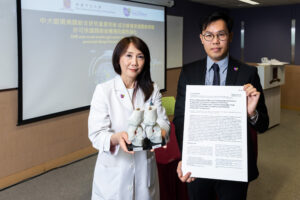
A CU Medicine study revealed that inhibiting interleukin-17 (IL-17), a pro-inflammatory cytokine, can repair and prevent bone damage in psoriatic arthritis (PsA) patients.
Featured are Professor Tam Lai-shan, Chair Professor and Head of Division of Rheumatology (left) and Dr Isaac Cheng Tsz-ho, Postdoctoral Fellow in the Department of Medicine and Therapeutics at CU Medicine.



